
By Christopher Meyer, Ph.D., Research Zoologist and Curator of Marine Invertebrates, U.S. National Museum of Natural History, Smithsonian Institution
May 3, 2019
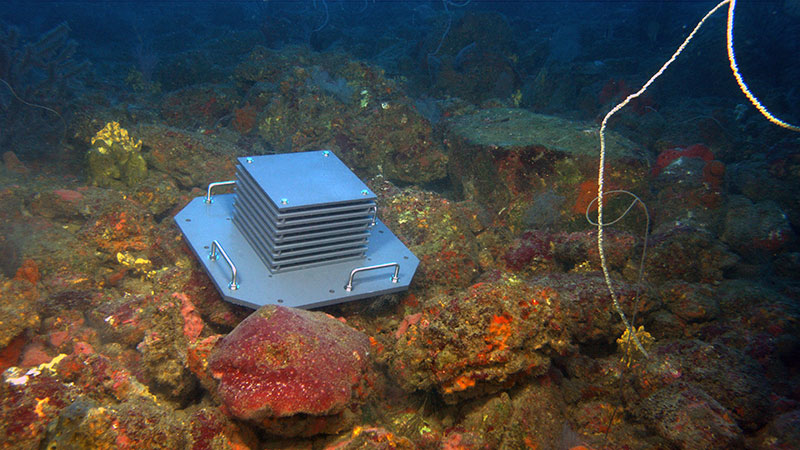
ARMS deployed on rocky coral/sponge habitat in Alderdice Bank at 63 meters deep. The rocks in this image are actually ancient blocks of basalt from the volcanic chimney spire close by. Image courtesy of Connectivity of Coral Ecosystems (CYCLE) in the Northwestern Gulf of Mexico. Download larger version (jpg, 8.5 MB).
Both shallow and mesophotic coral ecosystems harbor a breathtaking array of species. Unfortunately, the majority of species that live in these communities hide among the nooks and crannies, making them extremely difficult to assess, without destructively sampling these fragile habitats. Autonomous reef monitoring structures or ARMS are designed to overcome this challenge. ARMS are standardized stacked layers of PVC (polyvinyl chloride) plates that mimic the structural complexity of reefs. Think of them as underwater condominiums or pre-fabricated homes that can be used as biodiversity barometers to compare one place to another or change to an ecosystem through time.
The last couple of days, we have deployed ARMS on the seafloor at Diaphus and Alderdice Banks and will continue deploying them at the other banks we will be visiting. Alderdice Bank is part of the sanctuary expansion effort currently underway by the Flower Garden Banks National Marine Sanctuary. Alderdice Bank harbors spectacular basalt outcrops of Late Cretaceous origin (approximately 77 milion years old) that represent the oldest known rock exposed on the continental shelf off of Louisiana and Texas.
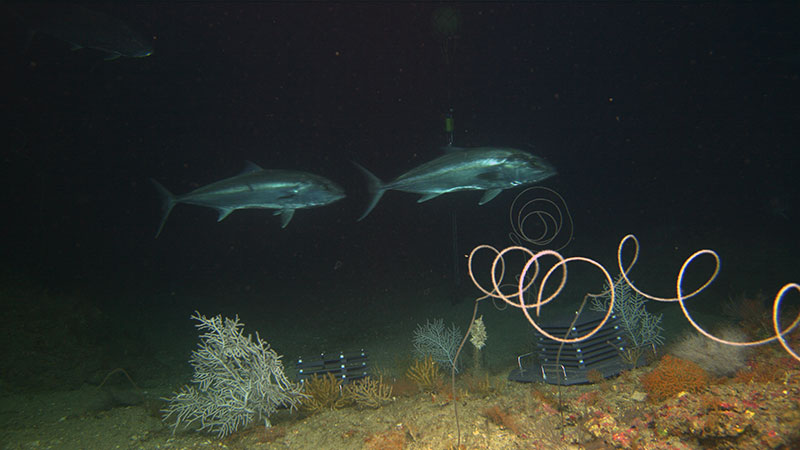
Set of ARMS deployed in a coral community on Diaphus Bank at 80 meters (262 feet) deep. Mooring with temperature, salinity, and oxygen sensors can be seen in the background. Image courtesy of Connectivity of Coral Ecosystems (CYCLE) in the Northwestern Gulf of Mexico. Download larger version (jpg, 5.8 MB).
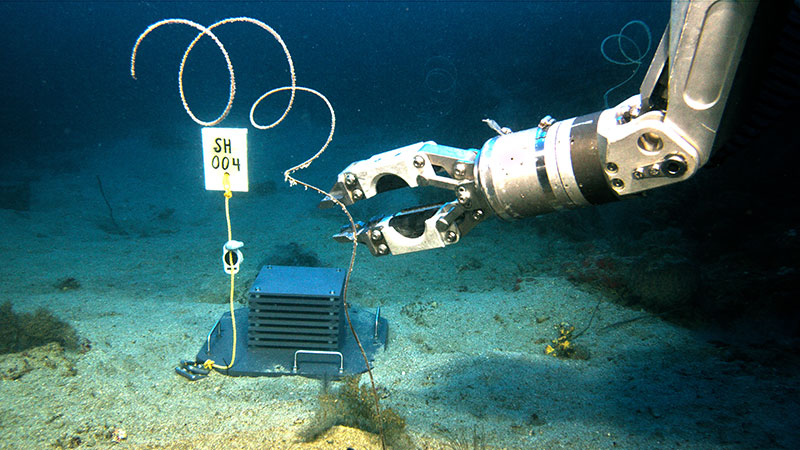
ARMS being deployed by the Global Explorer ROV in a sandy patch on Alderdice Bank at 63 meters (207 feet) deep. A marker with temperature sensors is attached to the ARMS. Image courtesy of Connectivity of Coral Ecosystems (CYCLE) in the Northwestern Gulf of Mexico. Download larger version (jpg, 9.6 MB).
The ARMS will remain on the seafloor for two years. During the third year of the project, we will recover them to see who colonized them. For our project, ARMS will also be used to collect new recruits of our target species to determine whether recruitment is dominated by local or regional larval pools.
Normally, ARMS are used in shallow coral reef systems and are easily deployed by SCUBA divers. However, we will be deploying ARMS on mesophotic coral ecosystems (30–150 meters or 100–492 feet), which are much deeper. Thus, we are using a remotely operated vehicle (ROV) to deploy the ARMS with a modified elevator system (a box from which the ARMS can be removed and distributed on the seafloor).
While ARMS have been used in the Smithsonian’s Deep Reef Observation Project via manned submersibles, this is the first time ARMS have been designed to work with an ROV deployment and recovery strategy.
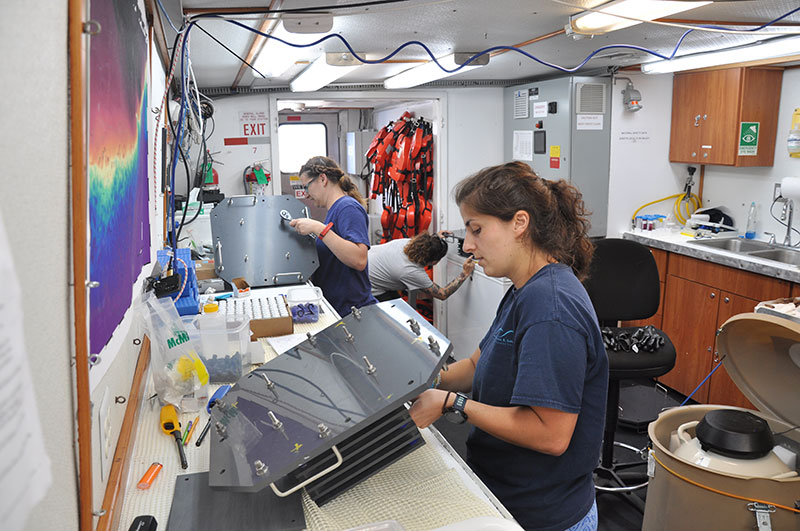
Maria Granquist, Jennie McClain, and Janessy Frometa assembling ARMS before deployment at McGrail Bank. Image courtesy of Santiago Herrera. Download larger version (jpg, 6.4 MB).
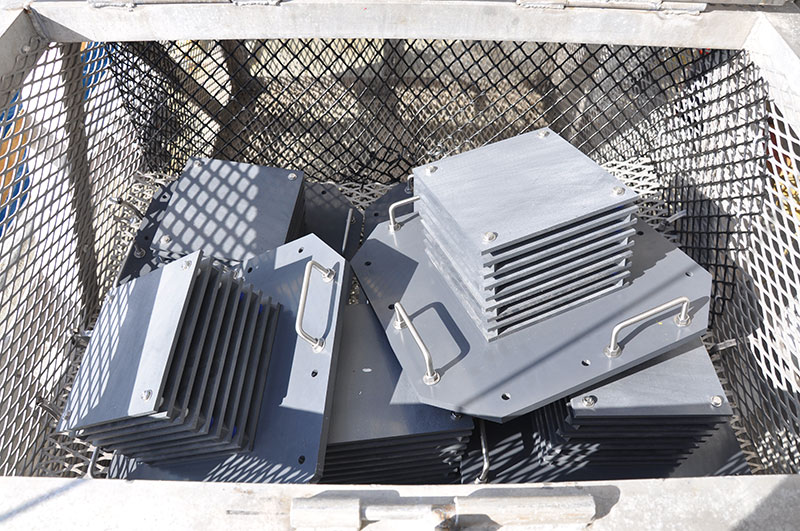
ARMS in a deployment basket awaiting deployment at McGrail Bank. Image courtesy of Santiago Herrera. Download larger version (jpg, 7.0 MB).